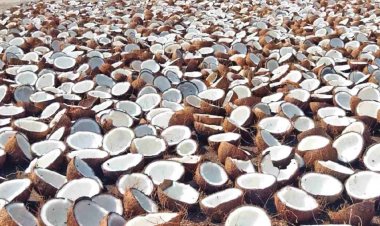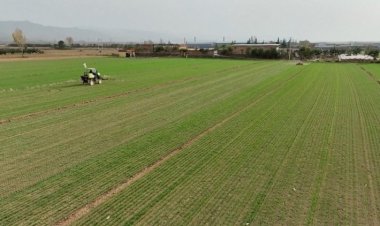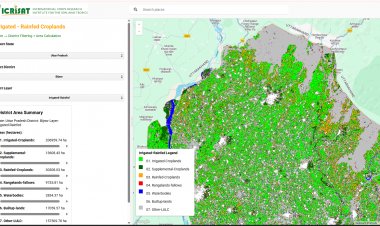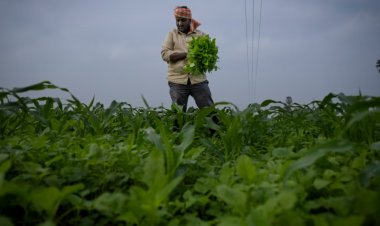Weak monsoon leads to reduction in Kharif area by 80 lakh hectares; big drop in pulses and oilseeds causes inflation fears
As per the latest data released by the Ministry of Agriculture on July 16, the area under Kharif crop cultivation is lagging behind that last year by 80 lakh hectares. In terms of area, paddy, pulses, oilseeds and coarse cereals are slipping along with cotton. On the one hand, farmers are waiting for the rains so they may sow their crops in western, central and north-western parts of the country. On the other, in the areas where farmers have sown the crops, they have to pay a heavy price to save them, thanks to the record increase in diesel prices.
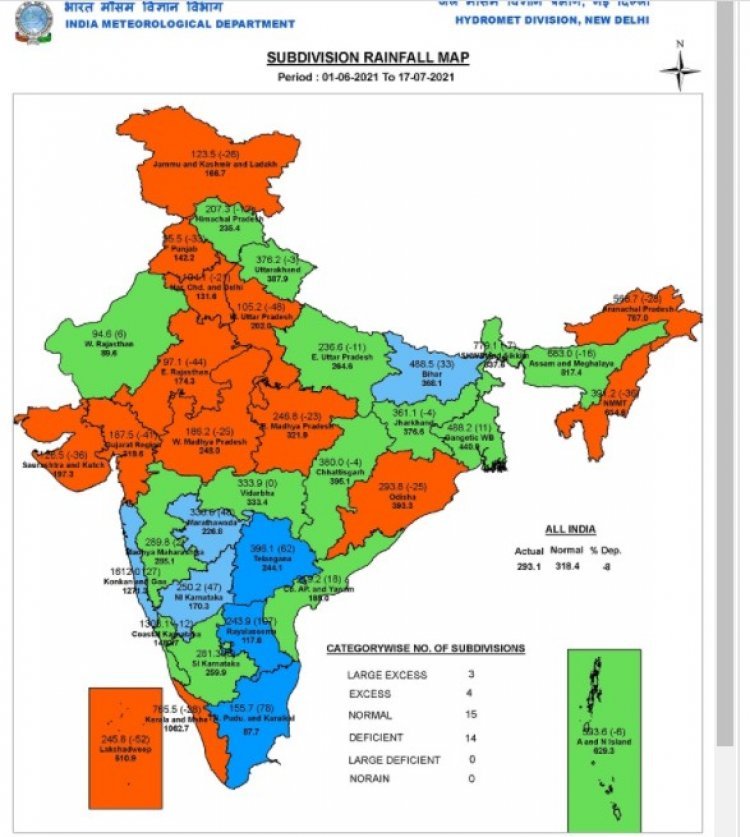
While the Gross Domestic Product (GDP) registered the highest-ever fall of 7.7 per cent in the last financial year (2020-21), the agriculture sector grew by more than 3 per cent, thanks to two consecutive normal monsoons, with a record foodgrains production in spite of the Covid-19 pandemic. But a 20 per cent to 59 per cent rainfall deficit in a large part of the country in the current monsoon season is creating troubles for the farmers. The situation has caused fears of an adverse impact on agricultural production in the current Kharif season.
As per the latest data released by the Ministry of Agriculture on July 16, the area under Kharif crop cultivation is lagging behind that last year by 80 lakh hectares. In terms of area, paddy, pulses, oilseeds and coarse cereals are slipping along with cotton. On the one hand, farmers are waiting for the rains so they may sow their crops in the western, central and north-western parts of the country. On the other, in the areas where farmers have sown the crops, they have to pay a heavy price to save them, thanks to the record increase in diesel prices. Besides, they have to struggle with power shortages at many places. Given this situation, there are fears that a government already struggling with the high inflation rates may have to face troubles on the pulses and oilseeds front.
As per the data for the crop-sown area released by the Ministry of Agriculture, the area under cultivation has reached 611.89 lakh hectares so far this year. Last year, it stood at 691.33 lakh hectares for the corresponding period, 80.04 lakh hectares more compared to the current year.
Speaking to RuralVoice on this issue, a reputed agriculture scientist of the country said, “The month-long period from mid-June to mid-July is the most crucial for the Kharif crops. But in the current monsoon season, the farmers have not sown the crops in a large part of the country due to the paucity of rainfall during this period. A delay in which implies an adverse impact on production.”
An India Meteorological Department (IMD) map has been attached with this report that shows the rainfall between June 1 and July 17. The map tells us that most of the sub-divisions of the country have received 10 per cent to 60 per cent less rainfall than normal. The parts that are facing the scarcity of rainfall include Gujarat, western and east-central parts of Madhya Pradesh, Bundelkhand, western Uttar Pradesh, Haryana, Punjab, a large part of Rajasthan, Jammu and Kashmir, Odisha and the North-East. On the other hand, most of the parts of Karnataka and Maharashtra, which are rather hit with drought normally, are receiving more than normal rainfall. One may directly relate this trend of rainfall to the status of the area under cultivation.
According to the government data, the paddy area is lagging behind that last year by 12.47 lakh hectares. It has reached 161.97 lakh hectares so far this year while it was 174.74 lakh hectares by this time last year. Coarse cereals have been affected the most because they are mostly produced in non-irrigated areas, which include a large part of Rajasthan. The total area for coarse cereals has reached only 91.34 lakh hectares, which is 23.73 lakh hectares less than the 115.07 lakh hectares in the corresponding period last year. The area for bajra is less than that last year by 14.59 lakh hectares while that for maize is lagging behind that last year by 4.8 lakh hectares.
Struggling with inflation in the case of pulses, the government recently imposed a ceiling on their stocks and invoked the Essential Commodities Act in order to rein in their prices. There are fears that the production of pulses may reduce in the current Kharif season. Their area under cultivation has gone down by 9.71 lakh hectares — it has reached only 70.64 lakh hectares so far compared to 80.36 lakh hectares last year. Among the pulses, urad and moong have witnessed the maximum reduction in their areas under cultivation.
Again, instead of providing relief to the government that is worried on account of the rapidly rising prices of the edible oils, the Kharif season may only bring further troubles. The area under oilseeds cultivation is lagging behind that last year by 20.44 lakh hectares. Last year, the area had reached 149.35 lakh hectares by this time as compared to only 128.91 lakh hectares so far this year. Within this segment, the groundnut area lags behind by 6.94 lakh hectares while that for soybeans by 12.62 lakh hectares.
The area under cultivation for cotton, the main Kharif cash crop, is lagging behind that last year by 14.62 lakh hectares. Compared to 113.01 lakh hectares in the corresponding period last year, the area has reached 98.38 lakh hectares so far this year. The sugarcane area has gone up marginally. It has reached 53.70 lakh hectares in comparison to 52.82 lakh hectares last year. This is the result of an increase in area in the sugarcane-producing regions of Maharashtra due to better rainfall and irrigation facilities.
It is obvious that a delay and a deficit in the monsoon rains have led to a fear of the Kharif production getting affected because sowing has lagged behind. The IMD had predicted in its forecasts that the southwest monsoon was likely to be normal. And the monsoon did arrive almost on time. But its northern line got stuck from June 19 and its activity weakened. A negative Indian Ocean Dipole (IOD) is being cited as a major reason for the weakening of the monsoon. The IMD had said in its forecast that the IOD was neutral but at about the same time the Australian Bureau of Meteorology had mentioned a negative IOD. RuralVoice had published a detailed story regarding this on July 3 that may be accessed through the following link: https://eng.ruralvoice.in/break-in-monsoon-activity-burdensome-on-farmers-imd-ignored-negative-iod-in-its-forecast
On the other hand, the IMD is yet to give a clear picture of this delay. It issued a press release through the Press Information Bureau (PIB) on July 12. But this release is more of a long clarification. What is interesting is that this release was rather focused on the delay of monsoon in reaching Delhi. Nonetheless, they are talking about an improvement in the monsoon. And there have been rains in some of the parts over the last few days. But the deficit in the rainfall so far has led to the fears of a negative impact on the production of Kharif crops.
The farmers had been benefited from better agricultural production due to the last two normal monsoons. But the current Kharif season prospects do not seem to be so good because of the rainfall deficit. The farmers in the irrigation-equipped areas are struggling with the high diesel prices and power shortages. Which is becoming a major factor in the increase in the production cost of the crops.



 Join the RuralVoice whatsapp group
Join the RuralVoice whatsapp group


















